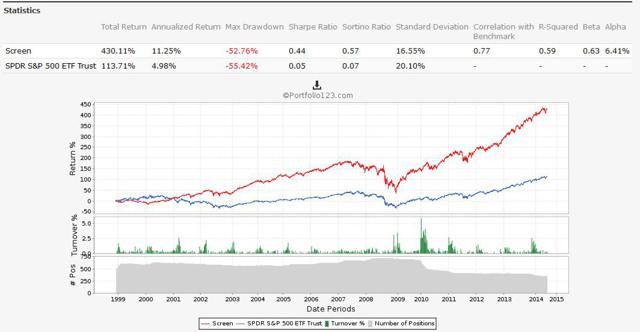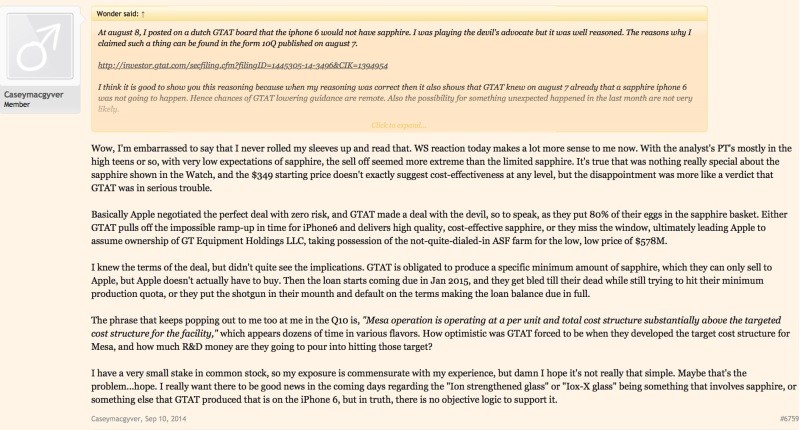Using the Earnings Yield as a Simple Valuation Screening Technique
Post on: 25 Апрель, 2015 No Comment

2C450 /%One of the reasons posts have been few and far between since the fall is that I have been transitioning the cash flow from debt repayment to savings and investments. If I wasnt that interested in the art and science of investing, I would have picked 2 Vanguard ETFs, done regular dollar cost averaging over the next umpteen years, and called it a day (this is something I think most people should do as they will have no further interest in analyzing investments). However, I have an obsessive level of interest and curiosity in businesses and want to figure out the most optimal way to invest in businesses. Thus, a lot of time was (and still is) spent gaining knowledge. Lets talk about one metric I use to screen potential investments: the earnings yield.
At heart, I am a value investor. I dont think there is a more logical and rational way to behave as an investor as evident by my post on how to think about an asset .
While it is important that dividends have been growing consistently and above inflation over time, Im not necessarily purely after dividends. I’m interested in owner earnings. To me, it doesn’t matter if profits are paid out in the form of a dividend, stock buy-back, or retained for organic growth. I want the highest possible quality of earnings I can get my hands on.
In a very general sense, owner earnings is the net profit remaining for owners of a business after all taxes and expenses have been paid. Generally, this is the Earnings per Share (EPS) figure. EPS is net income divided by the outstanding number of shares.
Why owner earnings? Because as an owner of a business, you are entitled to all of the profits generated by the business. However, most businesses only pay out a portion of the profits as a dividend. But, as an owner you share in all of the profits; it’s just that management will decide how much it needs to retain to continue growing profits at a reasonable rate for owners into the future.
This brings up an important point that I want to briefly side track into: good management is integral to your selection of business ownership. Would you want to own a local small business with an incompetent management in place? Management that acts with integrity and looks out for the best interests of the owners is of paramount importance.
Since we are after earnings as a whole and not dividends exclusively, we can use EPS to look at the earnings yield. Put simply, the earnings yield is EPS divided by the Stock Price – it is the inverse of P/E Ratio: E/P.
I have a spreadsheet set up in Google Drive that allows me to list and track a bunch of metrics and variables in real time (its too big to fit onto one screenshot). The highlighted section shows you the earnings yield for the following list of companies. It updates instantly as the price of each share changes.
What’s so special about inverting the P/E Ratio? By looking at the earnings yield, you can think of a stock as an “equity bond”. This allows you to do a quick screen on the businesses you have on your watch list, as a whole and by sector, based on their earning power per share.
Thinking of a stock as an equity bond allows you to think of ownership in a more conservative sense: since EPS is based on the trailing twelve months (ttm) of net income, the earnings yield figure you calculate at any given point in time shows you what your investment will yield based on zero growth in earnings going forward.
A solid business will grow going forward, but you can bypass that level of security analysis at this point by just figuring out what your investment will yield based on the current price of entry and static earnings going into the future.

The earnings yield will provide you a sense of how expensive or cheap a stock is, but it won’t tell you the quality of the profits (is it real and sustainable or merely accounting magic?) and whether profits will grow or fall in the future.
Despite these drawbacks, thinking of stocks as an equity bond allows you to screen businesses on an even footing against all other potential asset classes. You can compare the earnings yield of a potential investment in a business with that of the US Government 30 Year Treasury Bond. regarded as the ultimate risk free investment.
The Treasury yield is your hurdle rate. Currently, it yields
2.5%. If you cannot get a yield above 2.5%, why would you assume risk when you can get the same yield for no risk? It would be a foolish way to behave.
Using the earnings yield as a stock screener allows me to look at different opportunity costs between different potential investments as a first pass through glance. If something piques my interest, I will go deeper into the rabbit hole to see what exactly is making it look so attractive (or not).
You will have to answer for yourself whether the earnings yield on a potential investment is attractive – are you getting a risk premium on your investment that will let you sleep at night? Everyone will have different answers. And that’s what makes investing so interesting.














